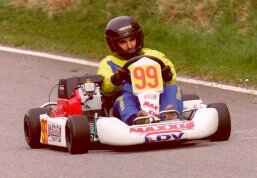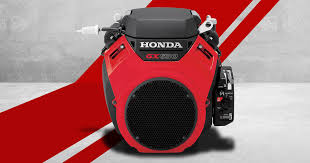Honda twins have been used in “Super Prokarts” in the UK and Ireland. Pretty quick, probably around KA speeds, with electric kart weight 

https://www.cpracing.co.uk/spro/main.php
Maybe, except there’s the factory recommended clearance for expansion when it’s turning a generator and then there’s what’s actually fastest for each engine. Max lift\minimum clearance is rarely the answer. This variance in ideal clearance can make a measurable difference, as much as 0.2\0.3 HP but finding it is really only practical on a dyno. Also, this ideal clearance can change with time.
The other variable of course is that the chassis can sap power too. Dragging brakes, bent frame, low tire pressures, toe, drivetrain resistance in chain\belt and axle bearings etc, can happen during an event, so checking the fleet before hand only goes so far until some wobbler causes problems.
There’s so many variances between out-of-the box generator engines that only matter when you have competition racing and it’s easy to go down a rabbit hole to equalize them mechanically. You can’t rely on the OEM tolerances and you have no choice to go beyond them. That includes the carbs too because just like the engines, some will work better than others.
Overall this is why I like running larger engines than needed then holding them back with a carb restrictor plate, or a smaller carb. It brings the engines closer together. Smaller carb is preferable because you keep good throttle response.
I think getting rid of the stock intake and exhaust would exacerbate the differences between the engines. But the intake side is easy thing to test. Removing the stock intake\airbox usually warrants a jet change too. I do get what you’re saying about potential heat soak if there’s an exhaust restriction, logging head temps might help with that.
So, in terms of what to do with that particular fleet… the ideal thing would be to gather data to see where they are. IMO the only way to do that reliably is with a dyno. Once you know where they are, then you can decide what changes to make and test to bring the fleet closer together. There are a couple of rental series that have a dyno trackside to “objectively” verify any concerns from drivers. I believe endurance karting do this.
I’m not sure what kind of dyno Chris uses, but it’s possible to make a portable hydraulic hub dyno. Basically remove a wheel from the kart, bolt on the pump to the hub and make some runs. If the curve doesn’t look right, then you can do some logging and digging.
I should note, I know you’re aware of a lot of these things, just documenting them here for readers too. I know a lot of these things might seem very nuanced, but the list is LONG and when you combo a handful of them together you can quickly end up with a dog of a kart.

